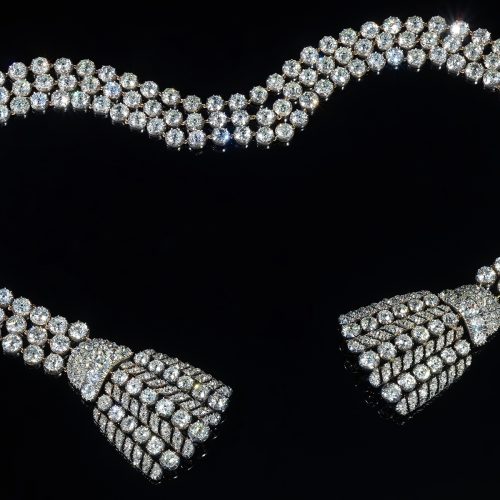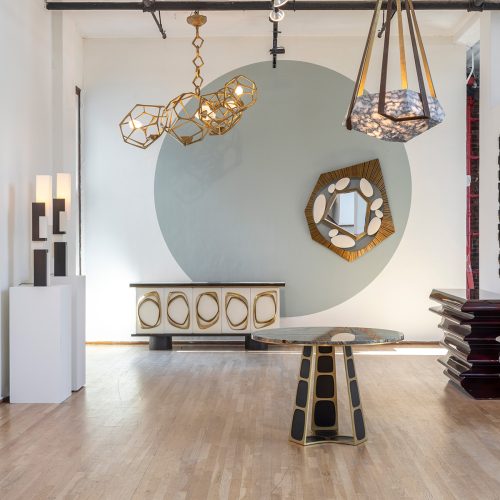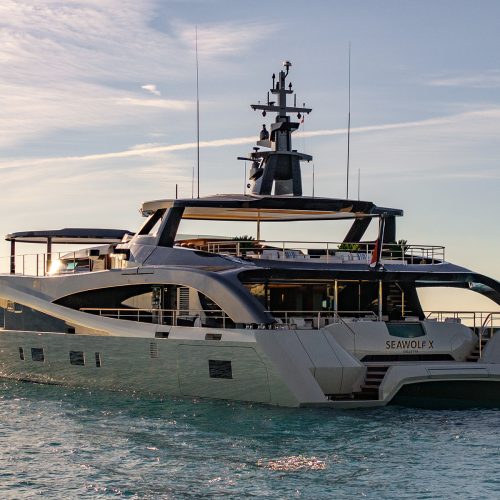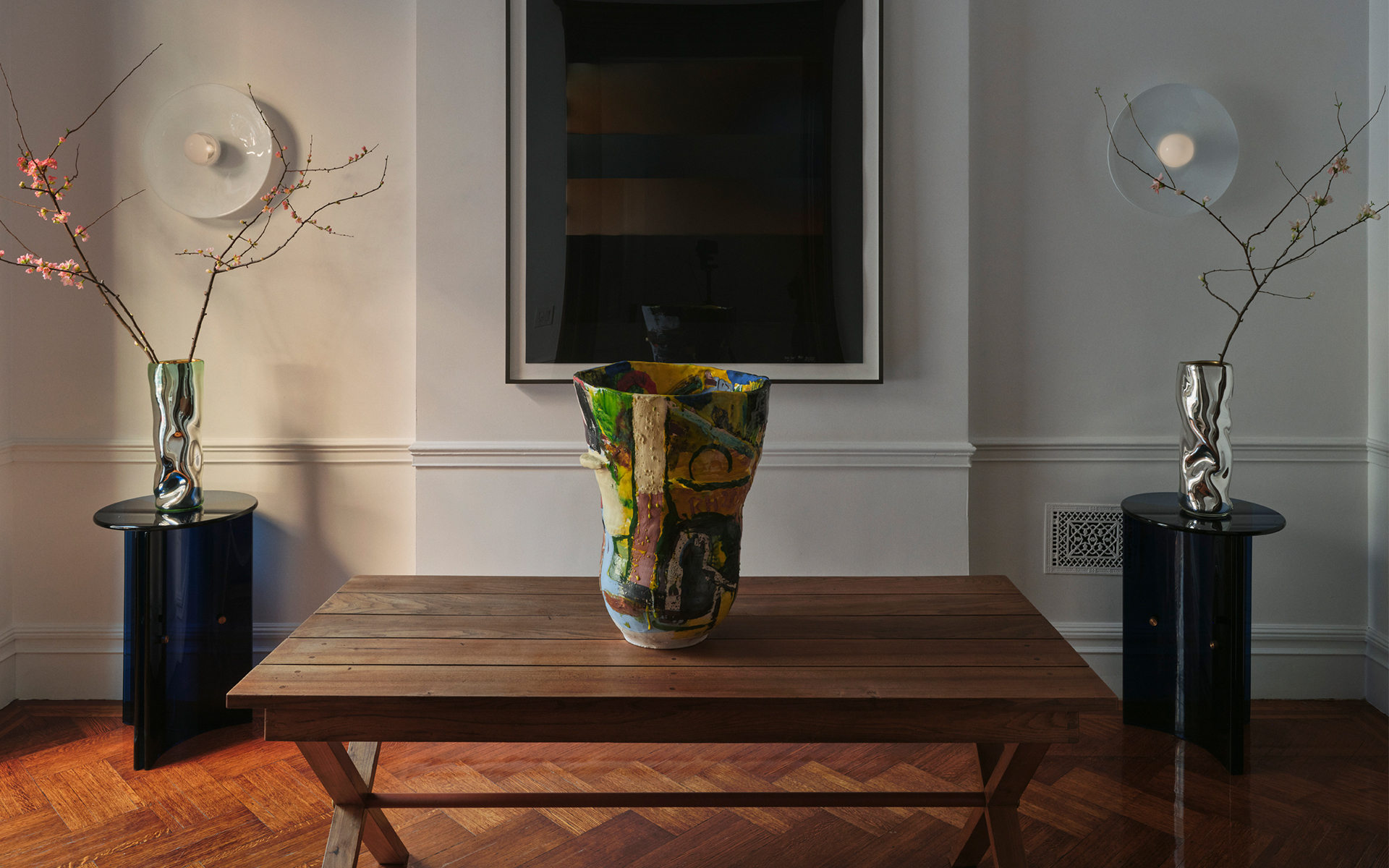

This Manhattan Townhouse Is Now a Dreamy Design Destination
Swapping the white cube for a dose of whimsy, curator Ashlee Harrison transforms an Upper East Side brownstone into an offbeat salon to discover rare works of collectible design, blue-chip art, and the dialogues that ensue when we engage with them differently
In Lewis Carroll’s timeless children’s novel Alice’s Adventures in Wonderland, the titular heroine falls down a rabbit hole into a psychedelic fantasy world of her own creation. Likewise, it’s easy to become just as entranced while exploring the private salon recently opened by the esteemed design curator Ashlee Harrison. Set within a storybook brownstone on a quiet stretch of New York City’s Upper East Side, the townhouse salon is chockablock with period details, blue-chip art, and imaginative works of collectible design that reflect Harrison’s seasoned eye after holding director-level positions at Carpenters Workshop Gallery and Design Miami.
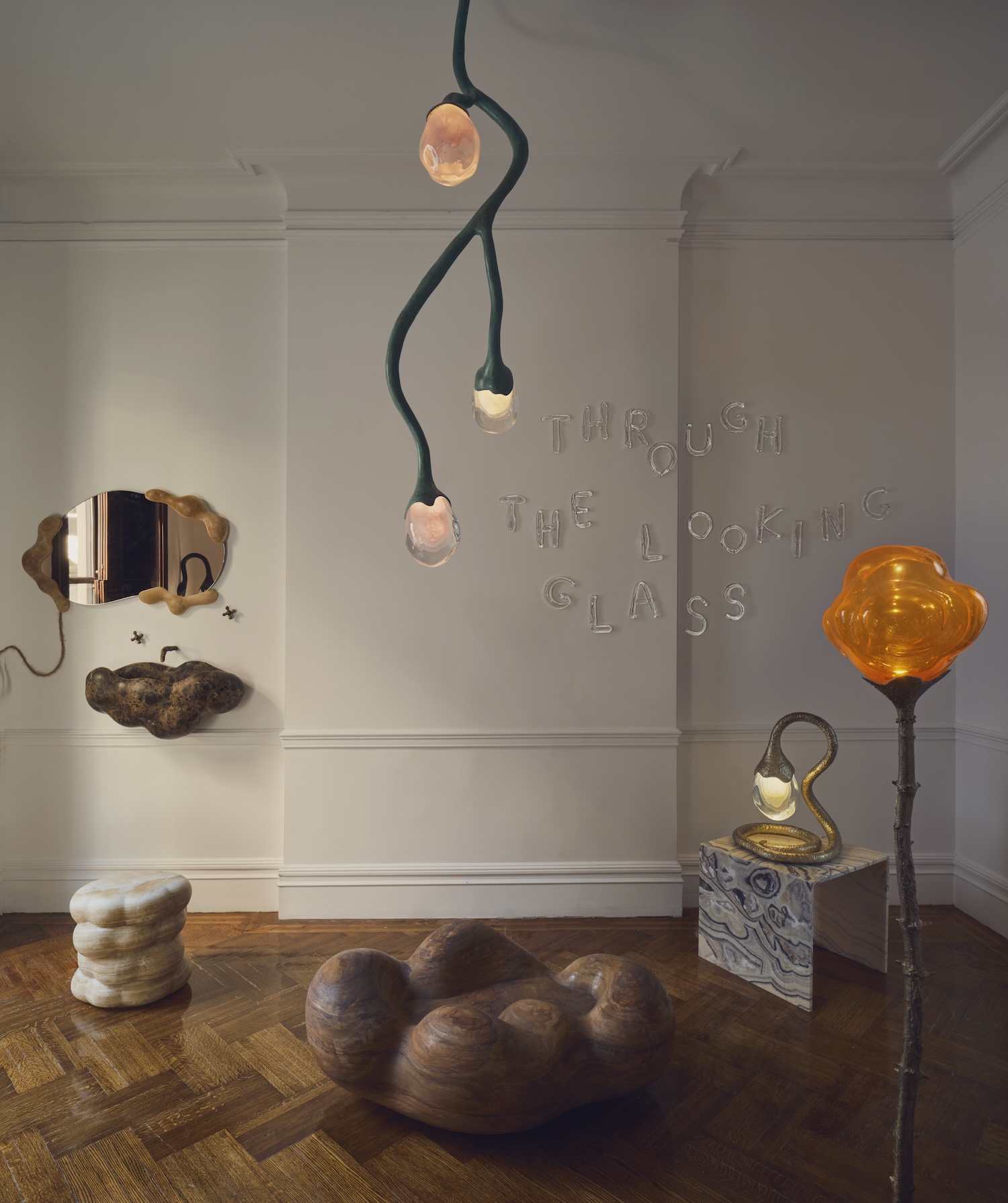
“Through the Looking Glass” by Irene Cattaneo. Photo: Matt Harrington
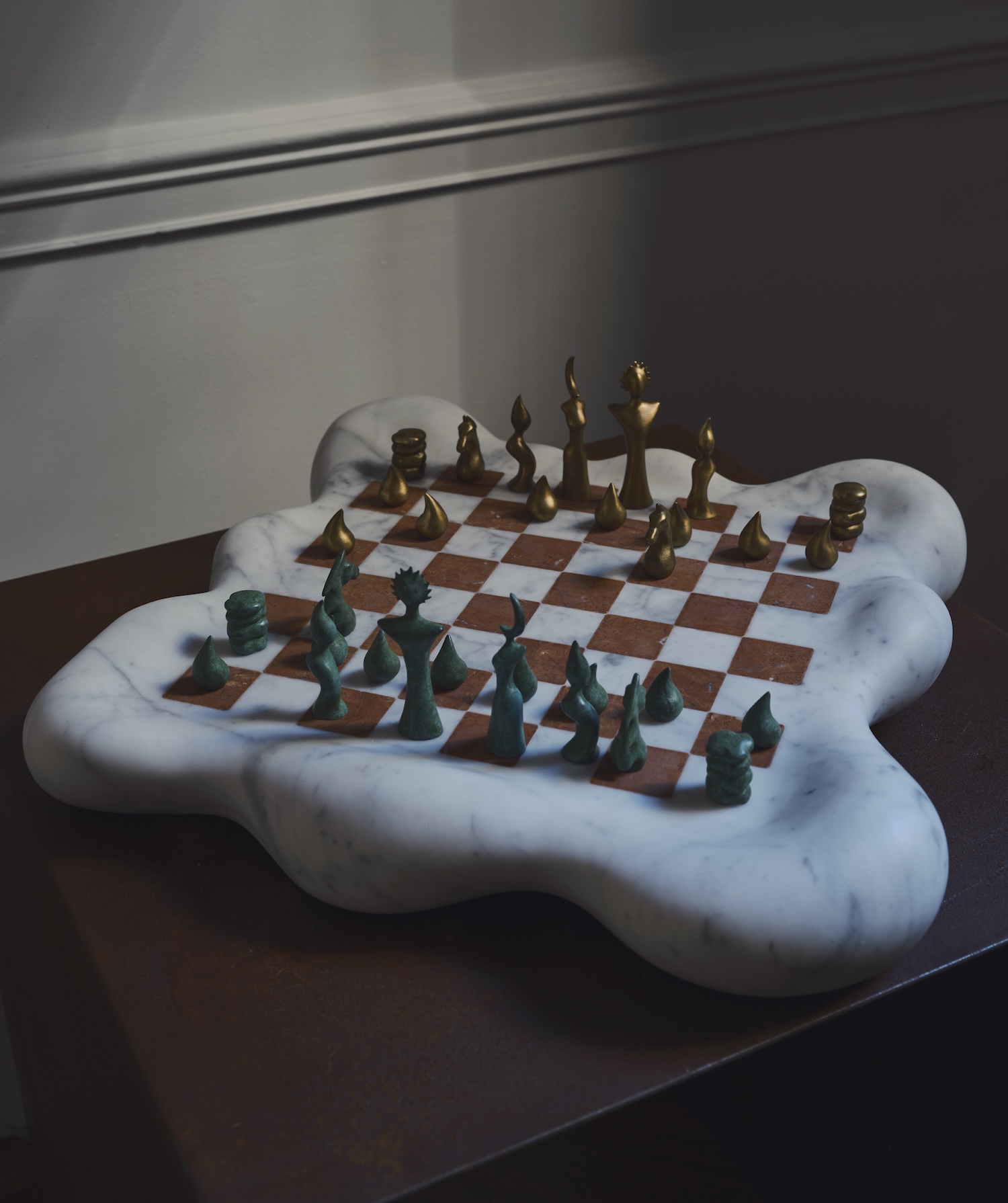
“Through the Looking Glass” by Irene Cattaneo. Photo: Matt Harrington
That approach charms from the get-go—visible from within the street-facing window is a winding chandelier whose stalk-like bronze tendrils sprout and coil from the ceiling, signaling that a surreal realm awaits inside. The luminaire is the dazzling centerpiece of a solo exhibition by Italian artist-designer Irene Cattaneo, fittingly called “Through the Looking Glass,” which translates Carroll’s boundless imagination into a series of sculptural lighting fixtures, objects, and furnishings imbued with an air of enchantment. That can take the form of a bronze floor lamp whose serpentine form culminates in a lustrous Murano glass blossom, an ominously dark sink basin resembling an upside-down thundercloud, or a chess board crafted from undulating Carrara marble and red travertine that Cattaneo outfitted with bronze celestial figures.
Cattaneo, who often devises immersive settings inspired by literature to present her virtuosic work, inaugurated the salon’s artist residency program. Harrison plans to pass the baton to other talents when “Through the Looking Glass” closes on April 30, some of whom can be found elsewhere in the townhouse. There’s Studio B.G. Robinson, whose slick aluminum furnishings nod to founder Brett Robinson’s formative years spent in a Manhattan Beach hot rod repair shop. He often utilizes plate rollers—the same apparatuses used to make airplane wings—to precisely sculpt each piece’s rounded forms, which are softened by shearling upholstery.

Concrete stools by Rick Owens sit near an aluminum Studio B.G. Robinson daybed. Photo: Matt Harrington
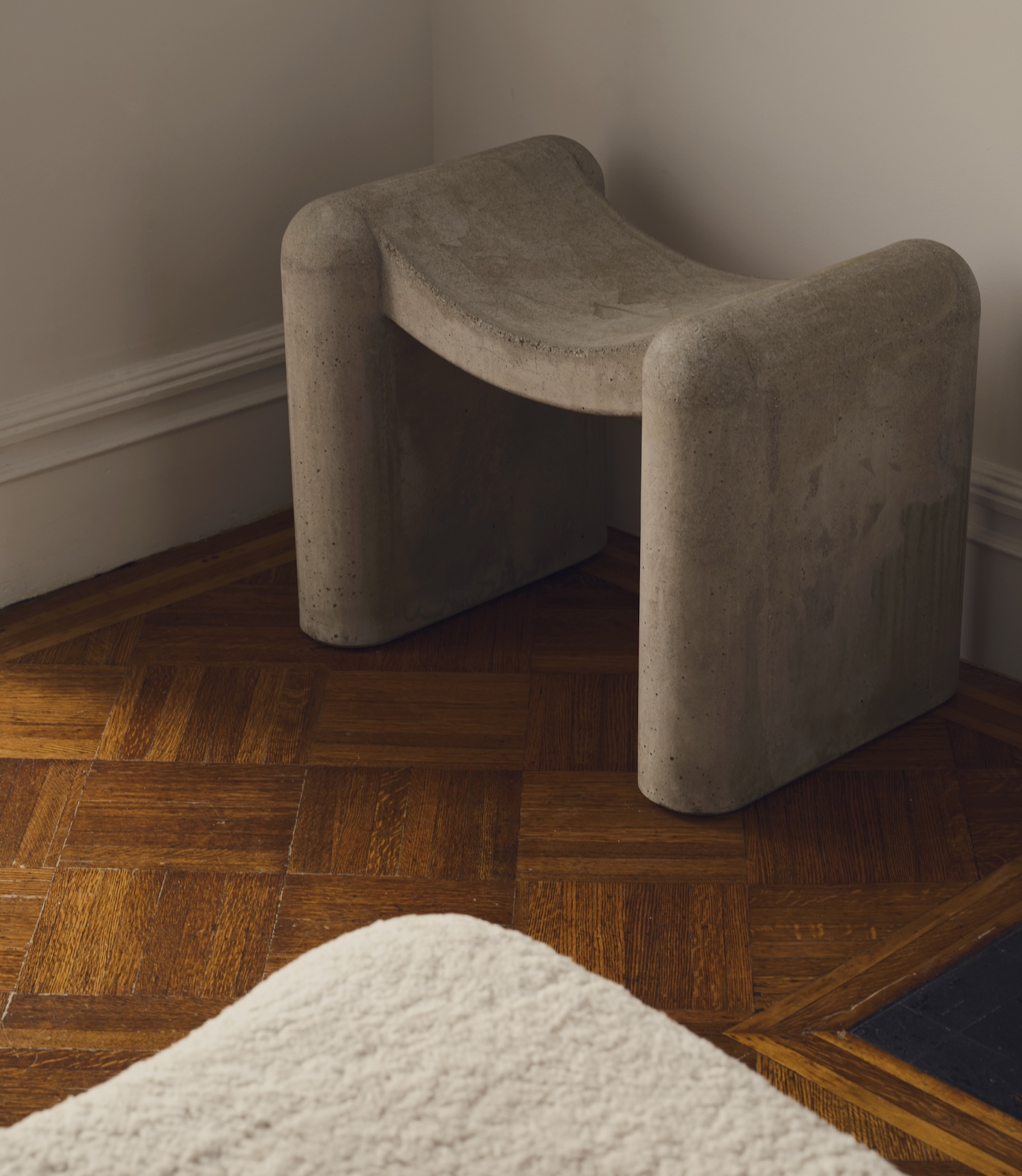
A concrete stool by Rick Owens. Photo: Matt Harrington
Robinson’s work is buoyed by the likes of Lola Montes, whose artichoke-inspired candelabras and furnishings adorned with expressive painted ceramics offer colorful contrasts. Ditto for the delightfully eerie Spring Shit Show (2021) chandelier by Sebastian ErraZuriz that features 3D-printed birds, dragonflies, and butterflies fluttering around shimmering crystal elements. Elsewhere, Harrison forges smart connections between her favorite works that seamlessly bridge styles and eras. Take a throne-like chair that Brooklyn artist Thomas Barger fashioned out of resin-coated paper pulp painted as black as the night; the imposing high-back neighbors a macabre Andy Warhol screenprint depicting an electric chair.
Such dialogues recur throughout the salon, which will evolve as Harrison acquires more pieces and expands her formidable repertoire of talents. In the same spirit as her previous employers, which often present collectible works in rarefied settings, her space deliberately eschews the white-cube format. But here, she intends to play by her own rules—and experiment with new ways to get the community excited about discovering and engaging with new art and design.
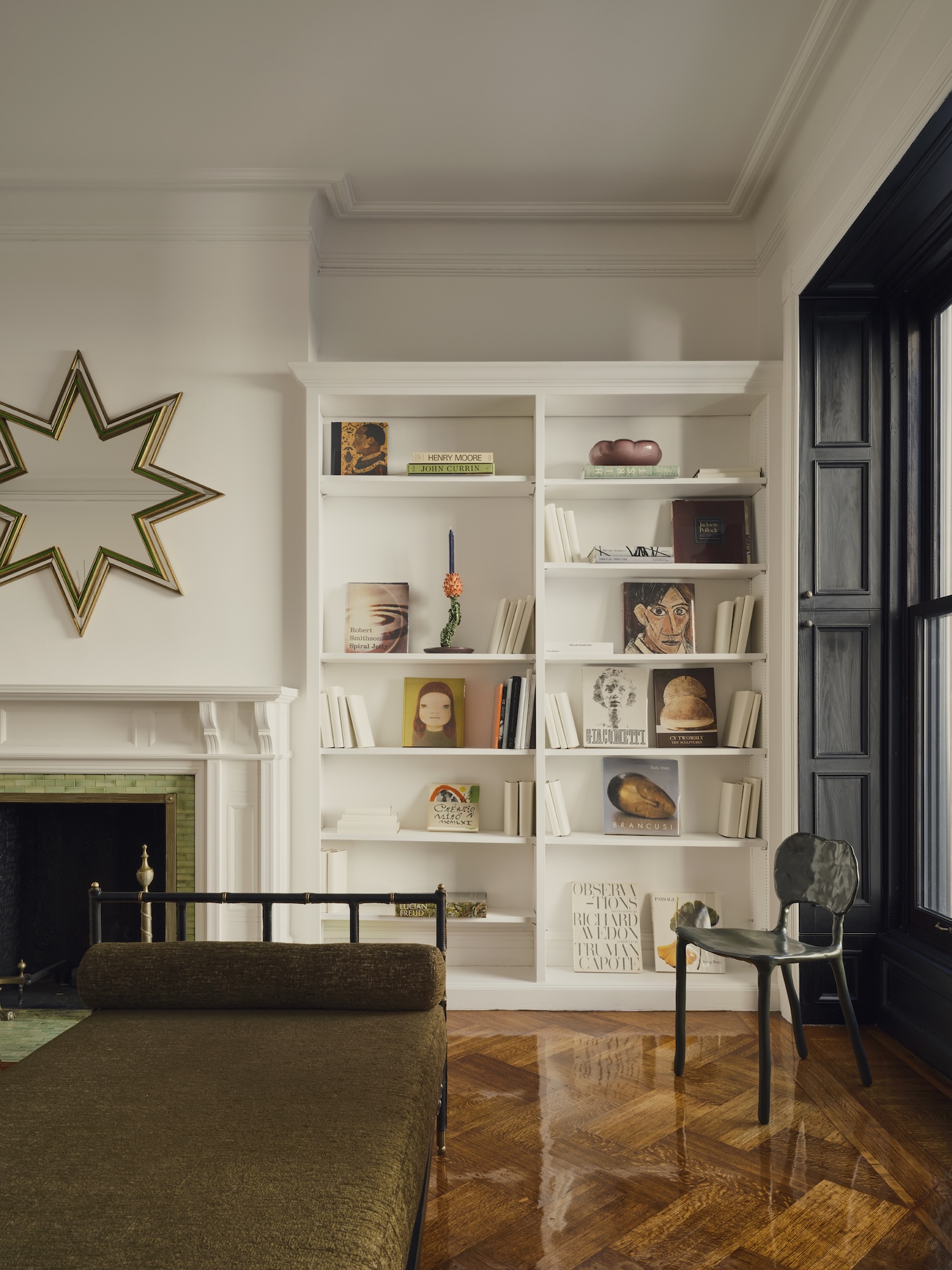
One of two beds by Jacques Adnet on the second floor. Photo: Matt Harrington
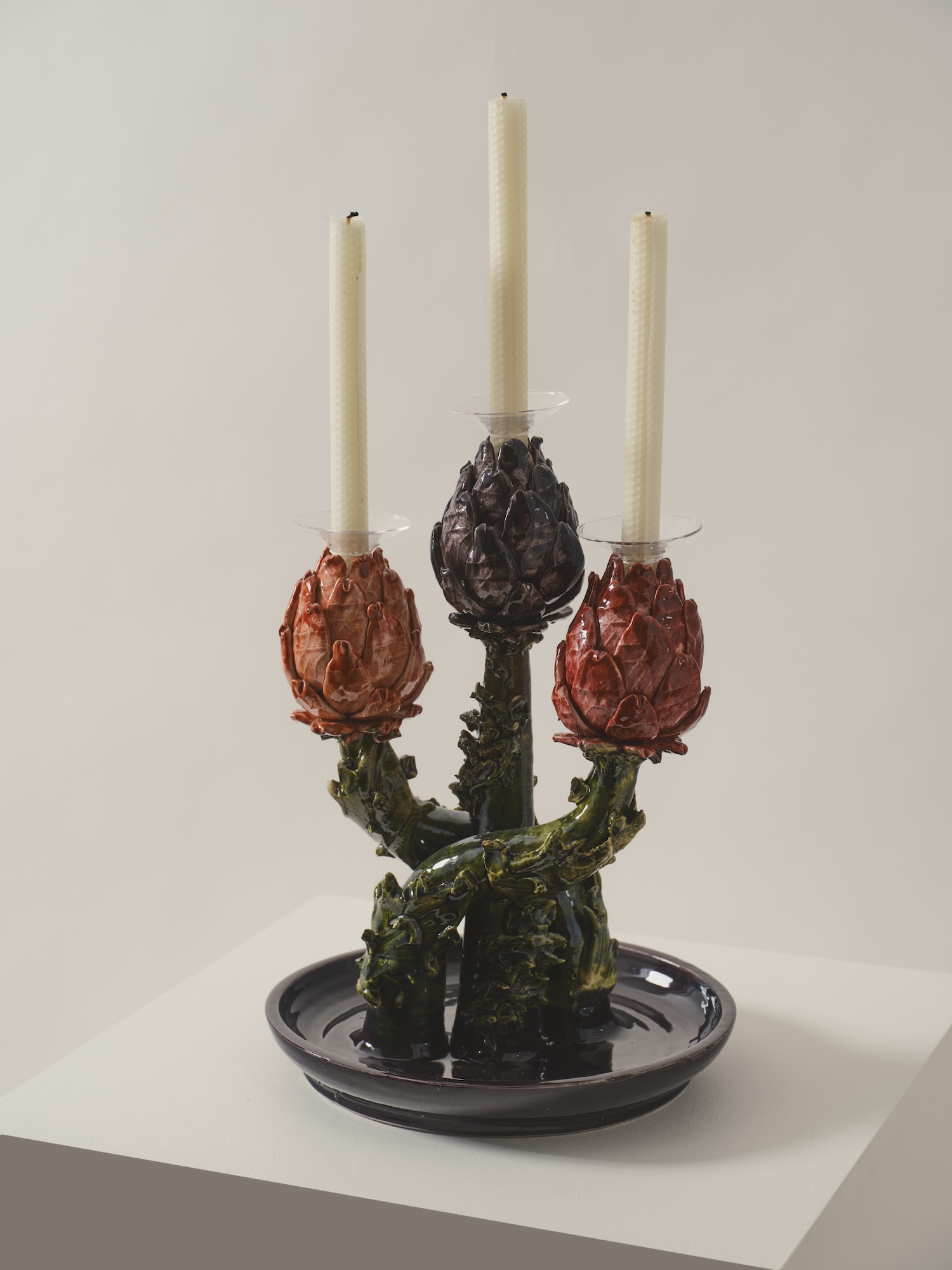
A hand-painted ceramic candelabra by Lola Montes. Photo: Matt Harrington
That not only means staging imaginative presentations of under-the-radar creative talents and staging offbeat exhibitions in partnership with nearby galleries, but opening up the townhouse as a venue for gatherings—dinners, talks, readings—geared toward sparking conversation and building community around the art and design on view. “[It] reflects a culmination of my past experiences,” she says, “and my passion for fostering a greater sense of community through a more personal approach to experiencing art and design.” More rabbit holes certainly await.
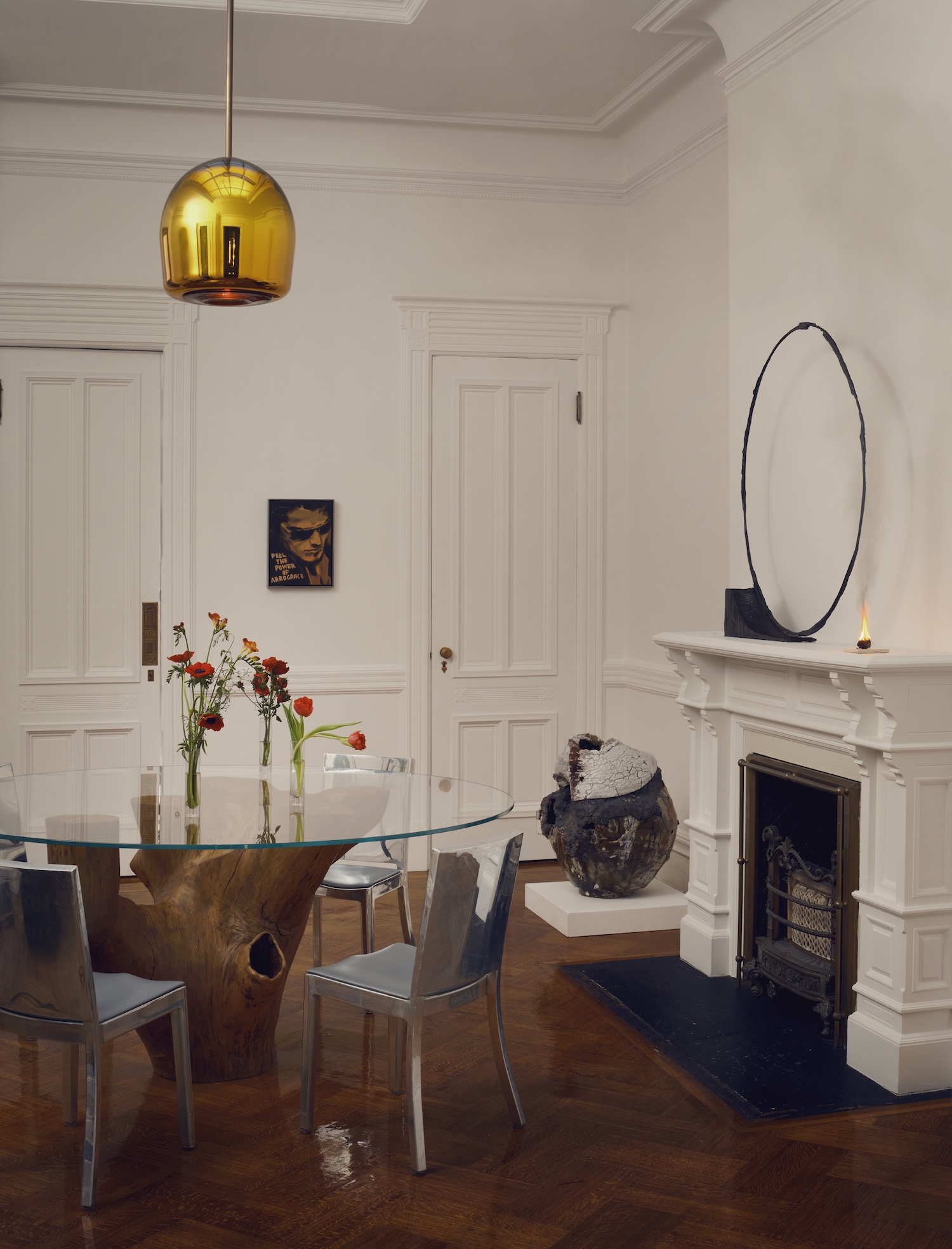
A table by Jose Zanina Caldas and pendant by Jeremy Maxwell Wintrebert in the dining room. Photo: Matt Harrington
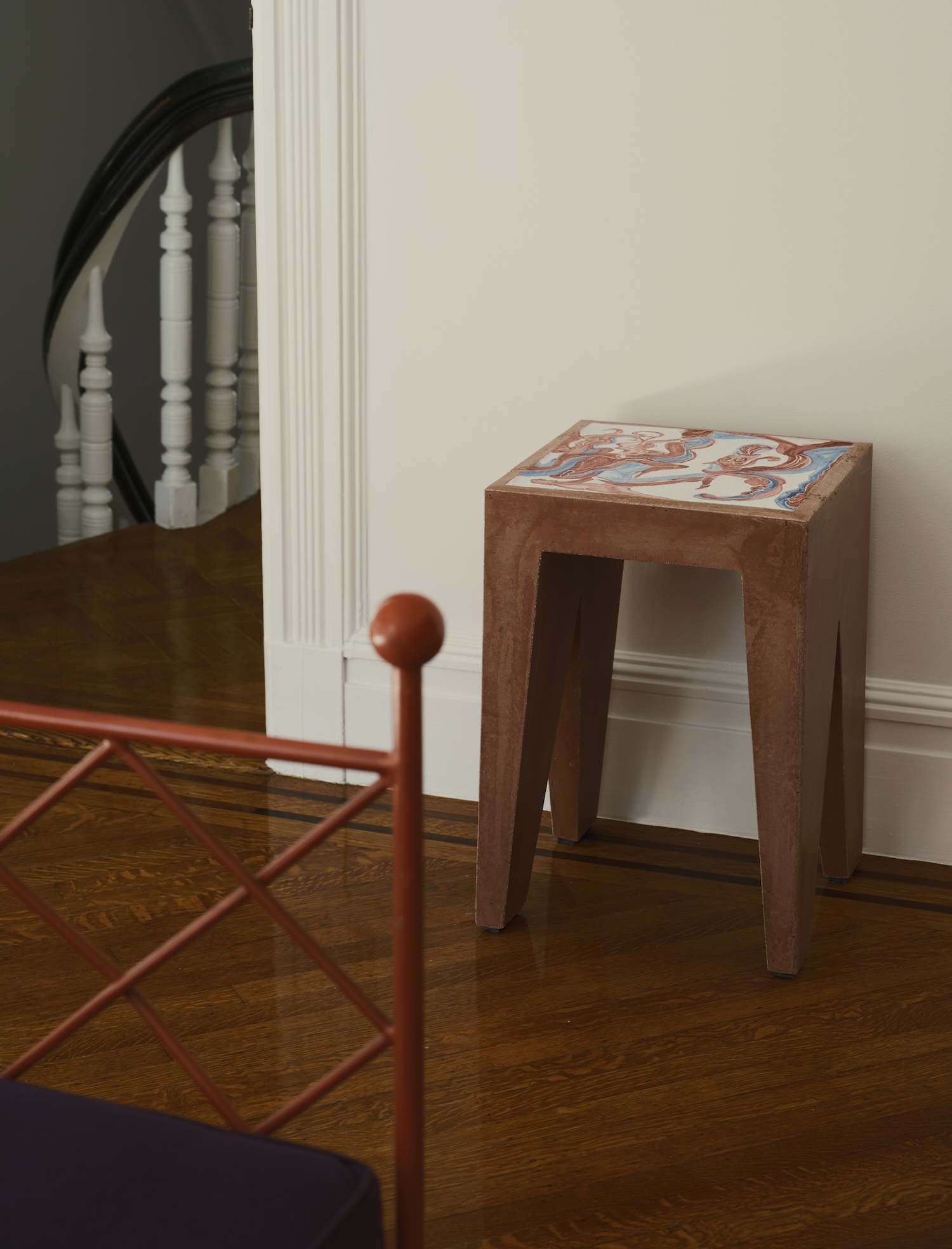
A hand-painted ceramic stool by Lola Montes. Photo: Matt Harrington

